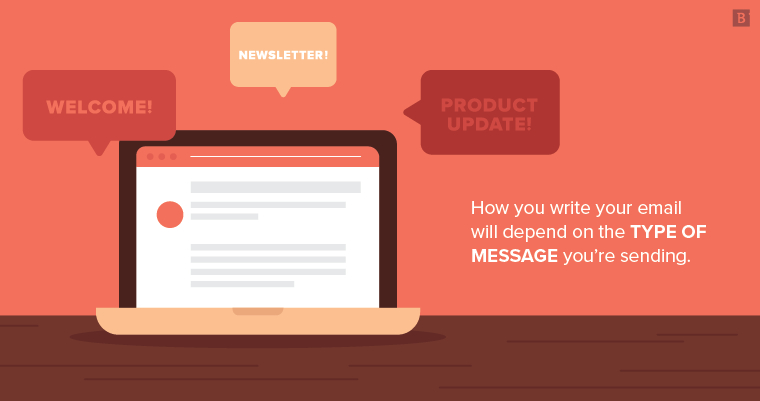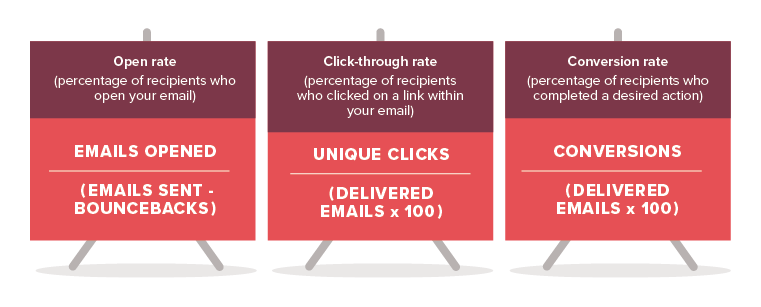How much does it cost to attract and retain customers through an email marketing strategy?
Let’s look at some stats:
Fast email marketing statistics
Email marketing is one of the most popular drivers of customer loyalty. In fact, 81% of small businesses rely on email marketing as their primary means of customer acquisition, and 80% rely on their email marketing strategy to retain customers.
These stats illustrate why so many businesses commit to email marketing as a central element of their growth strategy:
- Email marketing has an average return on investment of 42:1.
- Marketers with the highest ROI send between 5-8 emails per month.
- The average portion of revenue attributable to email marketing is 19%.
- 74% of marketing leaders rate their email marketing ROI as “good” or “great.”
Email marketing conversion rates can be a little more difficult to pin down because industries define them differently. For example, a software company might use demo signups as their primary conversion metric, while ecommerce companies define conversions as completed purchases.
In 2019, ecommerce businesses saw an average conversion rate of 15.91%. Meanwhile, businesses in this sector attributed 19.8% of their transactions to the email channel, which is on par with paid search (19.9%) and organic traffic (21.8%).
So how much does it cost to get these results? It depends on the level of commitment to the strategy, as well as the types of tools and technologies used.
Here’s what the statistics show at a high level:
- 82% of marketers spend between 0% and 20% of their budgets on email.
- Mid-sized companies spend between $9 and $1,000 per month on email marketing.
These figures show a wide range of spend. Ultimately, businesses need to look at a number of factors to determine what their email marketing budget should look like. Next, let’s see what elements contribute to the cost of email marketing.
What elements contribute to the cost of email marketing?
Email marketing campaigns can be very simple or highly complex. On one end of the spectrum, a single marketing stakeholder can run small campaigns using freely available technology. On the other end, enterprises use automation and customer relationship management (CRM) tools to deliver large-scale campaigns.
Ultimately, email marketing spend falls into three buckets: technology, creative and data:
Technology
Digital tools account for a large portion of email marketing expenses. It is not advisable to send marketing emails from a personal email account. Under the CAN-SPAM Act, marketers are required to provide an easy way for recipients to opt out of future emails. Personal accounts do not provide the ability to opt out with a single click.
Fortunately, there are many email marketing platforms available at various price points, with most offering free trials. Some examples include:
- AWeber: Designed for small businesses, AWeber has a number of useful features that allow marketers to automate email sequences, qualify leads, create templates, track results and much more.
- Campaign Monitor: Built around drag-and-drop functionality, Campaign Monitor comes with hundreds of professionally designed templates to choose from. Its robust data integrations make it possible to customize sequences based on customer information.
- WooCommerce: This ecommerce platform for WordPress features many marketing integrations, including the ability to connect a MailChimp account to a digital storefront.
Creative
Automation tools make it easier than ever for business leaders to streamline email campaigns, but no machine can write effective email copy. For that, you still need flesh-and-blood writers who understand your brand and its appeal to customers.
A lot goes into the creation of captivating email copy. Recipients make snap decisions based on email subject lines, so the copy has to be written by someone who understands what recipients want to read about. Creative writers can produce copy that encourages recipients to click into the email and then click through to your organization’s website.
Businesses that choose to produce copy in-house may save money in the short term, but could end up spending a lot of time writing email variations. Time spent writing and split-testing email copy may be better spent running the business. For that reason, many leaders choose to work with marketing agencies to help with copy.

Data
For your email strategy to be effective, you need a strong email list. Considering that 99% of consumers check their email every day, there’s a good chance the people you want to reach will at least be open to the idea of reading your messages. However, you need their permission before you can send them messages.
There are many ways to grow your email list. For example, you can add CTAs to your blog posts to encourage readers to sign up for your newsletter. Or, you could create gated content like eBooks, which people can download in exchange for their email address.

Using CRM software, you can create a better picture of each customer on your list. The more information you have, the better you can segment your lists and create customized email content.
When you need to grow your email list fast, you may want to consider purchasing an email list. This can be a little confusing for new marketers because you don’t really purchase a list of email addresses – remember, you need permission to send someone a marketing email. Instead, you pay for access to lists acquired by other organizations, such as market research firms. The list provider, or broker, will help you send customized messages and send you reports on open rates, etc.
Be wary about buying cheap lists that claim to contain millions of addresses. They’re likely filled with junk accounts that no one actually checks. According to Active Campaign, consumer lists cost between $100 and $600 per thousand emails, and business lists cost between $600 and $1,000 per thousand.
How to measure the success of your email marketing strategy
You need to measure your email marketing strategy to ensure you’re getting an acceptable return on your investment. If you use Google Analytics for campaign tracking, you can easily create reports to help you visualize your results. Here are a few important metrics to track:

Open rate
Calculation: Total number of opens / total number of emails sent
Monitoring your open rate can show you how effective your subject lines are at capturing reader interest. If your open rate is low or begins to drop, consider A/B testing your subject lines.
Click-through rate
Calculation: Total number of click-throughs / total number of emails sent
Click-through rate helps you measure the effectiveness of your email body copy and link anchor text. If you have a high open rate and a low click-through rate, it’s a sign that you need to adjust your copy or re-think your CTAs.
Conversion rate
Calculation: Total number of conversions / total number of emails sent
This shows the ultimate success of your campaign. You’ll need the other metrics on this list to help you understand why your conversion rate is high or low.
List growth rate
Calculation: (total number of new subscribers – number of unsubscribes) / total number of subscribers
Growth is good. Use this metric to determine whether or not you need to adjust your content marketing strategy to bring in new subscribers.
Unsubscribe rate
Calculation: Number of unsubscribes / total number of emails sent
A high unsubscribe rate means that your readers aren’t getting much value from your messages. Go back to your market research and try to find where the disconnect is between your messaging and your audience’s needs.
A newsletter-based email marketing strategy for small businesses
SMBs commonly center their email marketing strategy around a weekly or bi-monthly newsletter. This is a good option for businesses that don’t need to do much audience segmentation. Here’s what the strategy might look like:
The newsletter
Depending on the nature of your business, your newsletter might look like a traditional piece of direct mail that highlights top-selling products and special offers. Or, it might be a collection of useful information, relevant news stories and links to interesting articles.
Typically, email newsletters contain calls to action that encourage readers to click through to the brand’s website to learn more or shop.
Supporting content
Brands can use their content marketing materials to encourage newsletter signups. For instance, blogs might contain CTAs that ask readers to submit their email address. Or, they can use larger pieces of content, like eBooks, as lead magnets to bring in new readers.
Drip campaigns
In addition to the regular newsletter, SMBs can use email automation platforms to send targeted messages at various stages of the buyer journey. Examples include:
- Welcome email: When customers sign up for the newsletter, a welcome email can encourage them to add the email to their whitelist, ensuring future messages don’t get sent to the junk folder.
- Cart abandonment: If potential customers put items into their shopping carts without completing a purchase, an ecommerce platform can send an automated reminder to see if they have any questions about the products.
- Follow up: CRM software can send custom follow-up emails based on interactions customers have with the brand’s website or a member of the sales team.
Enterprise email marketing strategy examples
Enterprises may send thousands or millions of emails every day. They require scalable solutions with robust segmentation abilities. In addition, enterprises are more likely to leverage big data to glean insights about their customers.
Segmentation automation
Enterprises use CRM platforms like Salesforce to track interactions with customers on a national or global scale. While hyper-personalization isn’t always possible, they can still segment their lists based on previous customer interactions, data from market research firms and similar sources.
Complex email sequences
Enterprises may have sales cycles that take months to complete. They use automated email sequences to keep their buyers engaged. By monitoring sales interactions and collecting pieces of customer data, enterprises can develop multi-stage email sequences to nurture leads and provide value before they complete the sale.
Email blasts
At the enterprise level, list segments can be quite large, containing thousands of addresses. To reach people within these segments, brands leverage email blasts, which are single messages sent to a large base of recipients. Blasts can be used to introduce new products, announce events, conduct surveys and much more.

If you want to increase your average customer lifetime value, you need a direct line of communication with the people interested in your offerings. Email marketing remains one of the most viable strategies for maintaining deep connections with your customers.
Is your organization using an email marketing strategy? What type of results have you seen? Let us know in the comments.



